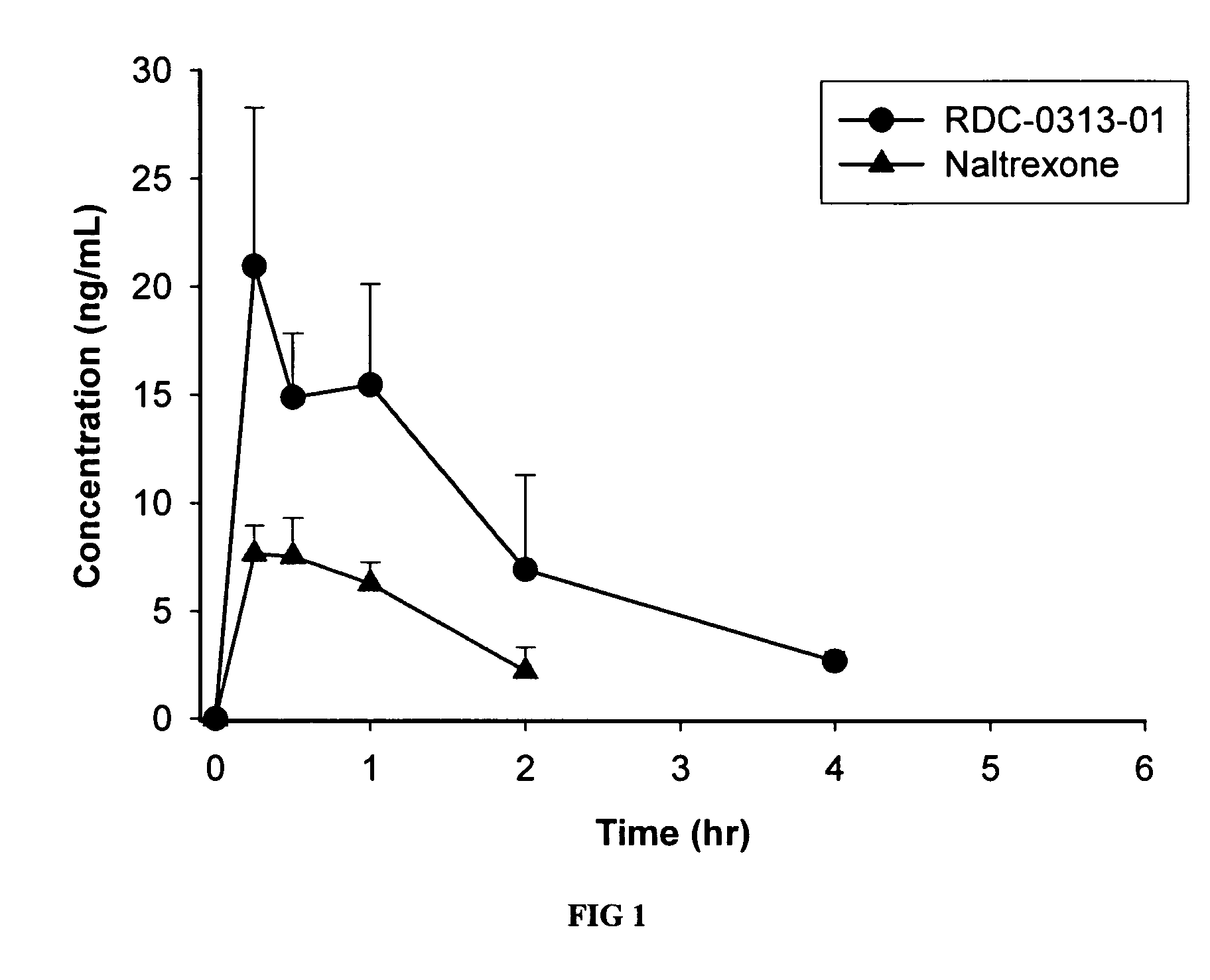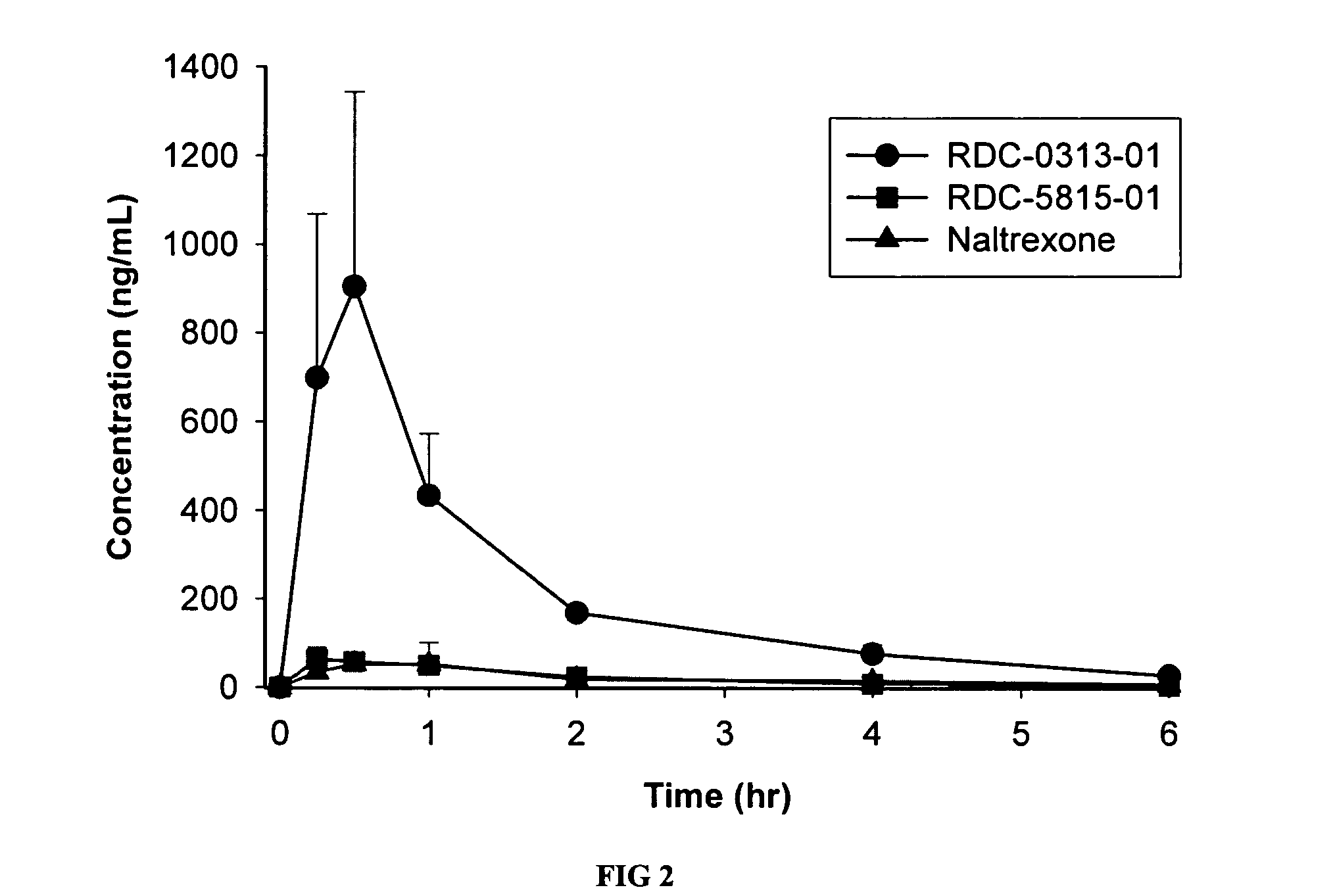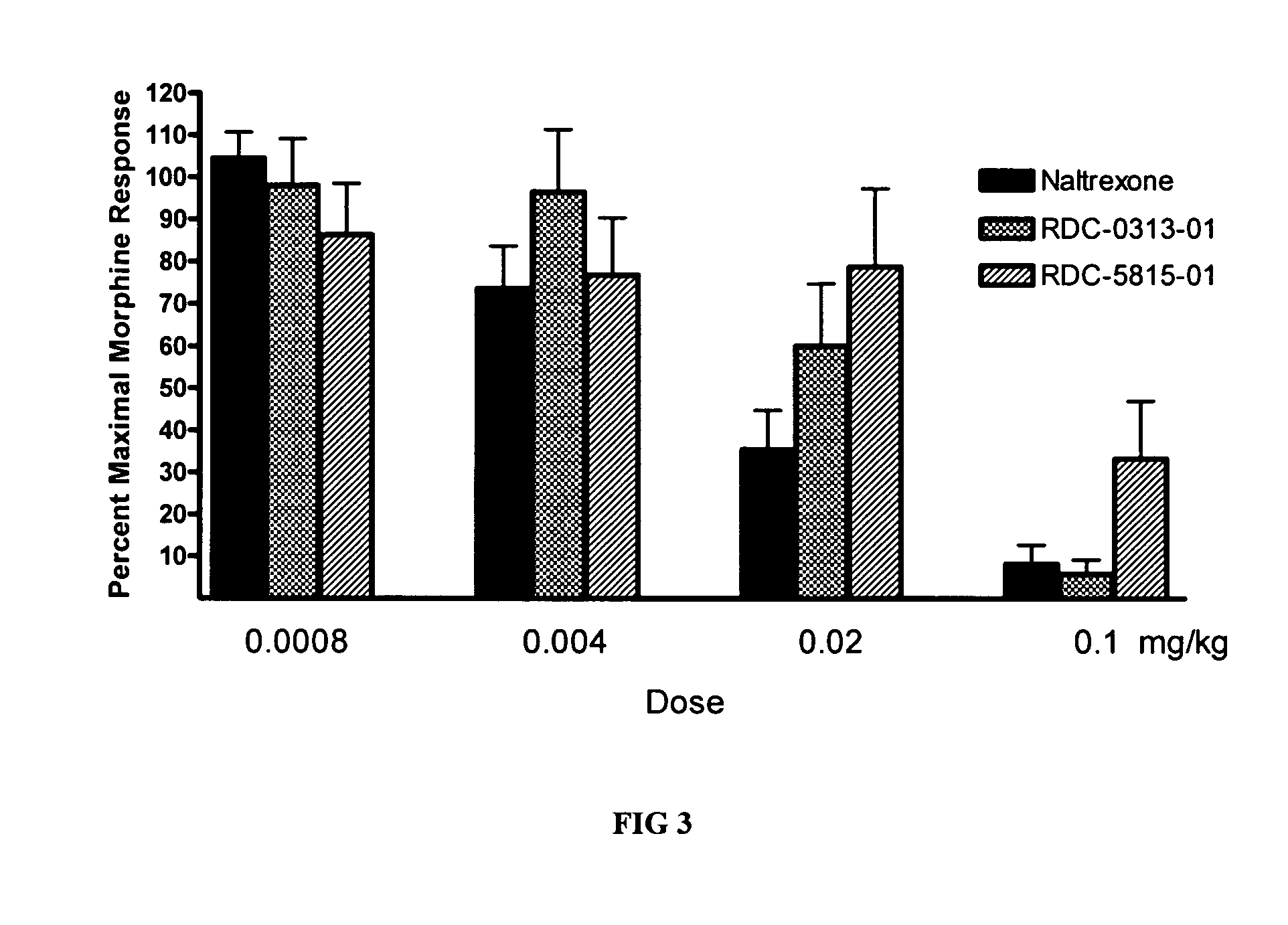Methods and compositions for the treatment of brain reward system disorders by combination therapy
a reward system and combination therapy technology, applied in the field of combination therapy, can solve problems such as cravings and withdrawal symptoms, achieve the effects of reducing cravings, reducing withdrawal symptoms and negative drug side effects, and reducing withdrawal symptoms and side effects
- Summary
- Abstract
- Description
- Claims
- Application Information
AI Technical Summary
Benefits of technology
Problems solved by technology
Method used
Image
Examples
examples
Experimental Procedures
[0100] A. General Methods
Animals
[0101] Male Wistar rats (initial weight of 200±30 grams; Charles River Laboratories, MA) were individually housed with free access to food and water. The vivarium was maintained on a 12 hour light / dark cycle with a room temperature of 22±3° C.
Drug Preparation
[0102] Naltrexone (0.05-10 mg / mL) was prepared daily in 0.9% saline and administered subcutaneously (SC). The drugs AM-251 (03-3.0 mg / mL) and baclofen (0.3-3.0 mg / mL) were suspended in 3% carboxymethyl cellulose; a total volume of 1 mL / kg of this suspension was delivered orally (PO) to the rat using a gavage tube. The two novel opioid antagonist compounds RDC-0313-01 (ALK-101) and RDC-5815-01 (ALK-102) were prepared in 0.9% saline for SC injections (0.0008-0.1 mg / mL) and in 3% carboxymethyl cellulose for oral (PO) administration (at a concentration of 10mg / mL) via gavage. Source of the test compounds are provided in Table 1.
TABLE 1Drug InformationCOMPOUNDSOURCENalt...
example i
Pharmacokinetic (PK) Profile of Novel Opioid Antagonists
[0105] The PK profiles of two novel opioid antagonist compounds, having the same pentacyclic nucleus as naltrexone, were assessed. These studies were designed to directly evaluate the pharmacokinetics of RDC-0313-01 and RDC-5815-01 against naltrexone following intravenous (IV), oral (PO) and subcutaneous (SC) administration (note: RDC-5815-01 was not evaluated by SC route of administration). Male Sprague Dawley rats (n=4 per route of administration per compound) received single IV (1 mg / kg), PO (10 mg / kg), or SC (0.1 mg / kg) doses. Blood samples were collected for 6 hours post-dose. Concentrations of each parent drug were determined by LC / MS-MS. Pharmacokinetic parameters were determined by noncompartmental analysis. RDC-0313-01, RDC-5815-01 and naltrexone were all rapidly absorbed and had similar half-life values. Compared to naltrexone, RDC-03130-01 exposure (AUC) was approximately 8 fold greater following PO administration (...
example ii
Inhibition of Morphine-Induced Analgesia
[0106] The ability of the opioid antagonists RDC-0313-01, RDC-5815-01 and naltrexone to inhibit morphine-induced analgesia was directly compared on the hotplate test. The antagonists (0.0008-0.1 mg / kg, SC) were administered 30 minutes prior to morphine administration (15 mg / kg, IP) in different groups of rats. Thirty minutes later, the animals were tested on the hotplate. Compared to naltrexone (FIG. 3), RDC-0313-01 was equipotent or slightly less potent (similar dose-response effect), whereas RDC-5815-01 was less potent.
PUM
| Property | Measurement | Unit |
|---|---|---|
| time period | aaaaa | aaaaa |
| time | aaaaa | aaaaa |
| temperature | aaaaa | aaaaa |
Abstract
Description
Claims
Application Information
 Login to View More
Login to View More - R&D
- Intellectual Property
- Life Sciences
- Materials
- Tech Scout
- Unparalleled Data Quality
- Higher Quality Content
- 60% Fewer Hallucinations
Browse by: Latest US Patents, China's latest patents, Technical Efficacy Thesaurus, Application Domain, Technology Topic, Popular Technical Reports.
© 2025 PatSnap. All rights reserved.Legal|Privacy policy|Modern Slavery Act Transparency Statement|Sitemap|About US| Contact US: help@patsnap.com



